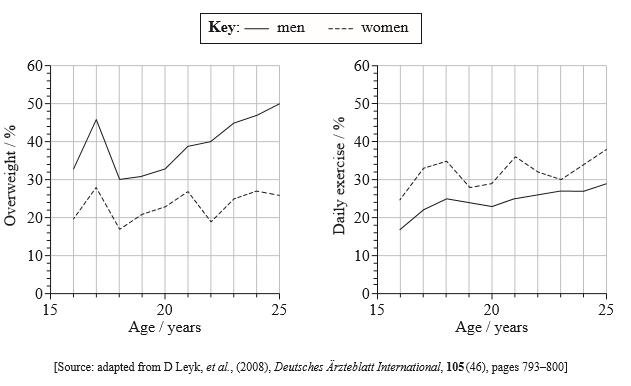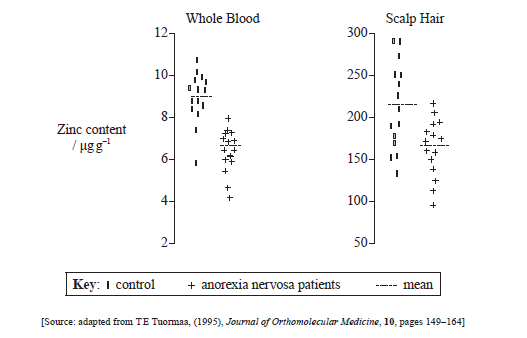IBDP Online Test Series By iitianacademy
Comprehensive Test Preparatory package targeted towards IBDP
Question
Outline the molecular structure of different types of fatty acids.
Evaluate the benefit of reducing cholesterol in the diet.
Answer/Explanation
Markscheme
fatty acids share a common structure but differ in the total number of carbon atoms in the chain;
saturated fatty acids have no double bonds between carbon atoms;
unsaturated have double bond(s);
monounsaturated have one double bond / polyunsaturated have more than one double bond;
cis fatty acids have adjacent hydrogen atoms on same side of double bond and trans have them on opposite side;
(accept annotated diagrams)
cholesterol is a steroid found mainly in animal products;
it builds up in the walls of arteries / causes clogging/narrowing/blockage of artery / atherosclerosis;
lowering its ingestion may lower the probability/ risk of coronary heart disease/CHD;
cholesterol can be synthesized by the liver;
factors other than diet can affect levels of cholesterol / genetic factor more important than diet;
Question
List two possible variants in the molecular structure of unsaturated fatty acids.
State one reason to include fibre in the diet.
Describe the health consequences of a diet rich in proteins.
Markscheme
number of carbons (in the chain/length of chain);
number of double bonds (in the chain) / may be monounsaturated/ polyunsaturated;
cis/trans structure in unsaturated fatty acids / OWTTE;
location of double bonds;
counting inwards from opposite end of COOH group/omega 3/omega 7;
(bulk) may help regulate digestive process/peristalsis/prevent constipation;
may lower risk of colon/intestinal cancer/appendicitis/diabetes/cardiovascular disease;
may decrease hunger (helping with control of food intake);
quick drop in weight (through loss of body fluids);
important for children/pregnant/breastfeeding women;
loss of calcium ions in urine / possible risk of osteoporosis;
unbalanced diet / lack of essential nutrients;
e.g. essential vitamins/minerals/fibre;
possible rise in blood pressure;
release of ketones into bloodstream/ketosis (causing loss of appetite);
possible risk of kidney/liver disorders/stones/reduced functioning;
gout;
Question
Within a cross-sectional study “Fit for Life” in Germany, the body mass index (BMI) of volunteers aged between 16 and 25 years was investigated. Volunteers were also interviewed about their daily exercise habits. The graphs below show the percentage of men and women who were overweight, and the percentage who exercised daily.

Measure the difference between the percentage of overweight men and the percentage of overweight women at age 20.
State the range of the body mass index (BMI) that corresponds to overweight status.
Compare the percentage of men and women who exercised daily.
Evaluate the hypothesis that being overweight is due to lack of exercise.
Markscheme
10 (%) (allow responses in the range of 9 to 11 %)
25.0 −29.9 / above 25 and below 30
Do not accept 30 as this is classed as obese.
more women exercise than men;
both show an increase (between ages 16 to 25);
similar trend lines over time / slightly greater increase in women;
women have greater increases and decreases/greater variability while men gradually increase/stays level;
Award any one of the above marking points if shown as a valid numerical comparison.
(hypothesis is supported) as the greater percentage of men are overweight and they exercise less than women / vice versa;
(hypothesis is supported) lowest percentages of overweight ages (18 and 20) correspond with peaks of exercise;
(hypothesis is not supported) as even though both men and women exercise more over time the percentage overweight also increases;
(hypothesis is not supported) other named factor which influences being overweight; (e.g. availability of cheap high energy foods / large portion sizes / increasing use of vehicles for transport / changes from active to sedentary occupations / genetics)
BMI does not consider muscle mass/bone structure/bone density;
only narrow range of ages considered;
Question
Zinc (Zn) is an important dietary nutrient. More than 200 enzymes that are dependent on zinc have been identified. One consequence of zinc deficiency is suppression of appetite, due to reduced sensitivity to tastes and smells. A recent study compared the presence of zinc in tissue and fluid samples collected from 15 patients with anorexia nervosa to that from 15 control patients. The results are shown in the graphs below.

Compare the zinc content of scalp hair of the control group with that of the anorexia nervosa group.
Discuss whether whole blood zinc content of 6 μg g–1 would indicate that a person has anorexia nervosa.
Discuss whether dietary zinc supplementation would be an effective treatment for anorexia nervosa.
Zinc is a mineral. Distinguish between a mineral and a vitamin.
State the body mass index (BMI) below which a person is considered to be underweight.
Markscheme
mean zinc content higher in control group;
control group more variable;
overlap between two groups / highest of anorexia nervosa group equals mean of control group;
(data suggest this is) probable / could be symptom;
other conditions could lead to low zinc;
6 μg g–1 is within the lower range of “normal”;
zinc supplementation is necessary for insufficient dietary intake / improvement in below normal intake would be resolved;
improved appetite may result;
low zinc may be effect not cause of anorexia nervosa / other causes of anorexia;
minerals are inorganic while vitamins are organic;
minerals tend to be in ionic elemental form/small molecules while vitamins tend to be larger molecules;
(below a BMI of) 18.5kg m-2 (units needed)
Question
Outline the variation in the structure of fatty acids.
Markscheme
cis (isomers) or trans (isomers);
saturated or unsaturated;
monounsaturated or polyunsaturated;
location of the double bond;
can be short chain or long chain;